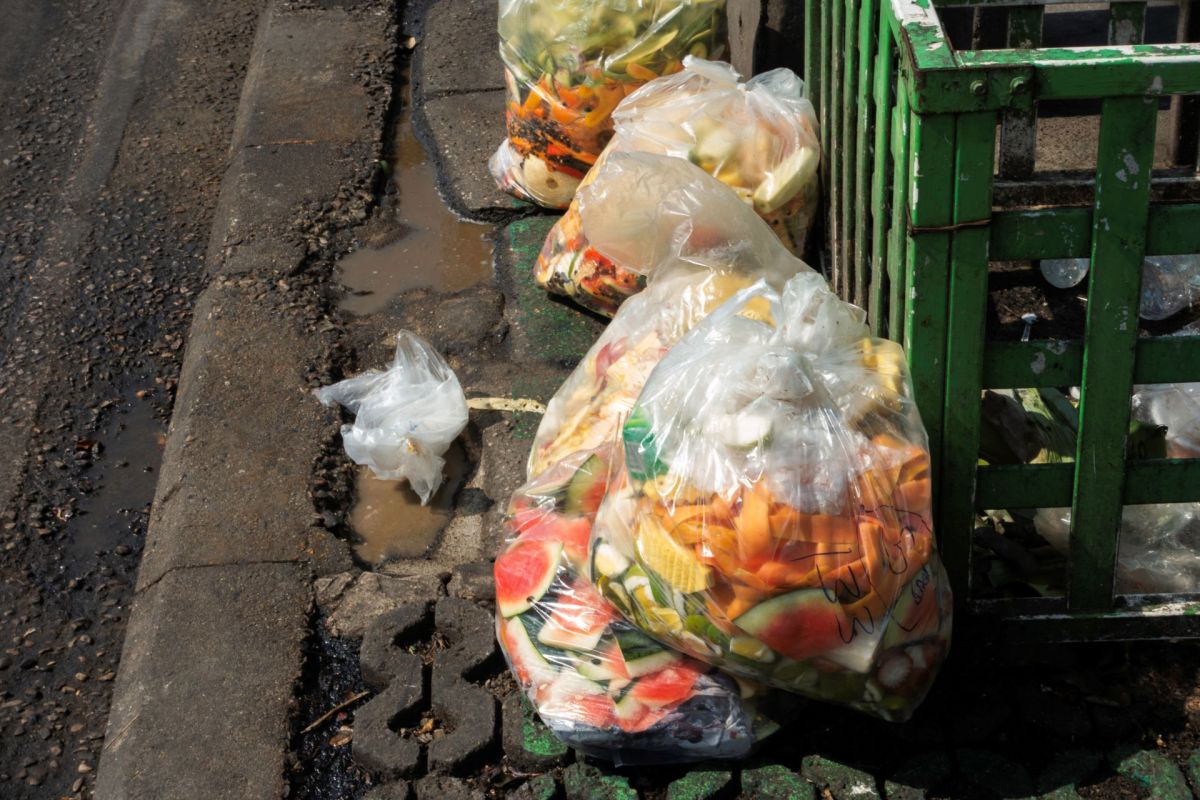About 33% of food in the U.S. — or 80 million tons — goes to waste each year, according to ReFED, an organization dedicated to remedying that issue. ReFED's recent findings show that most food waste in 2021 (43.6 million tons, or 54.5%) came from residential homes.
Other culprits include farms, the food service industry, manufacturers, and retail. Food waste includes food that is not consumed and is instead thrown away, placed into landfills, dumped down drains, or left to rot in fields.
🗣️ What single change would make the biggest dent in your personal food waste?
🔘 Not buying food I don't need 🧐
🔘 Freezing my food before it goes bad 🧊
🔘 Using my leftovers more effectively 🍲
🔘 Composting my food scraps 🌱
🗳️ Click your choice to see results and speak your mind
What's happening?
Each year, the U.S. wastes about 149 billion meals worth of food, according to ReFED. Much of the wasted food is edible, but 1 one in 10 Americans are food insecure.
At home, people waste food by letting it spoil, which may occur from bulk food purchases, impulse buys, or food-storage issues. Some consumers may misread expiration dates and throw food away before it's ready.
Why is food waste important?
Food waste is recognized by the United Nations and companies across the globe as a pressing issue. It squanders valuable resources, impacting the environment.
ReFED stated in its study, "the impacts of surplus food and food waste on our climate and environment are enormous, since food that is never eaten still requires resources to grow, harvest, transport, cool, cook, or otherwise prepare — even when it ends up being disposed of."
According to the Environmental Protection Agency (EPA), putting food in landfills creates even more climate concerns.
"More than 85 percent of greenhouse gas emissions from landfilled food waste result from activities prior to disposal, including production, transport, processing, and distribution," the organization said.
What's being done about food waste?
ReFED provides various solutions for reducing food waste. Many of them are systemic changes that impact food producers, retailers, and policymakers. Solutions range from limiting the overproduction of food to encouraging cultural shifts in attitudes toward food and waste. The organization's proposal could reduce food waste by 58 million tons per year.
For consumers, ReFED suggests participating in education campaigns that include planning meals and reducing food waste in homes. Other solutions include controlling portion sizes, accessing meal kits, and composting.
ReFED also provides the Food Waste Monitor that compiles food waste data across the U.S. This tool shows the types and causes of food waste that were most prevalent between 2016 and 2021, including information about where the food ends up.
ReFED's Insights Engine also provides solutions, tracking information, and financial impact results to give a well-rounded view of the effects of food waste and convey why change is necessary.
Across industries, global companies are taking strides to address the issue. Google has agreed to cut its food waste in half by 2025 with changes such as avoiding sending food to landfills whenever possible.
The EPA and the U.S. Department of Agriculture created the U.S. 2030 Food Loss and Waste Reduction Goal in 2015, which proposes cutting food loss and waste in half by 2030.
Join our free newsletter for easy tips to save more, waste less, and help yourself while helping the planet.








